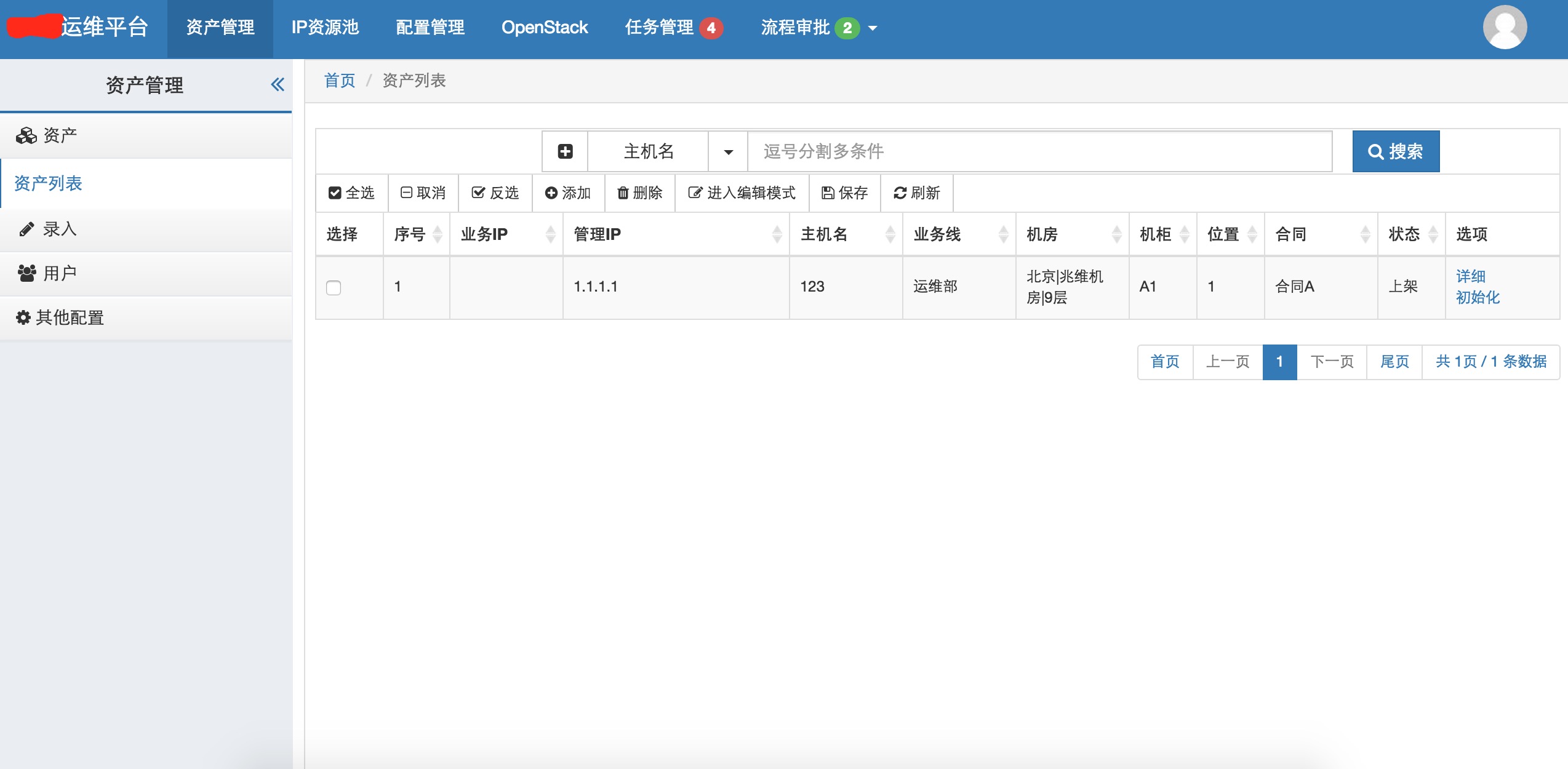Python CMDB开发
运维自动化路线:

cmdb的开发需要包含三部分功能:
- 采集硬件数据
- API
- 页面管理
执行流程:服务器的客户端采集硬件数据,然后将硬件信息发送到API,API负责将获取到的数据保存到数据库中,后台管理程序负责对服务器信息的配置和展示。
采集硬件信息
采集硬件信息可以有两种方式实现:
- 利用puppet中的report功能
- 自己写agent,定时执行
两种方式的优缺点各异:方式一,优点是不需要在每台服务器上步一个agent,缺点是依赖于puppet,并且使用ruby开发;方式二,优点是用于python调用shell命令,学习成本低,缺点是需要在每台服务器上发一个agent。
方式一
默认情况下,puppet的client会在每半个小时连接puppet的master来同步数据,如果定义了report,那么在每次client和master同步数据时,会执行report的process函数,在该函数中定义一些逻辑,获取每台服务器信息并将信息发送给API
puppet中默认自带了5个report,放置在【/usr/lib/ruby/site_ruby/1.8/puppet/reports/】路径下。如果需要执行某个report,那么就在puppet的master的配置文件中做如下配置:
on master
|
1
2
3
4
5
6
|
/etc/puppet/puppet.conf[main]reports = store #默认#report = true #默认#pluginsync = true #默认 |
on client
|
1
2
3
4
5
6
7
8
|
/etc/puppet/puppet.conf[main]#report = true #默认 [agent]runinterval = 10server = master.puppet.comcertname = c1.puppet.com |
如上述设置之后,每次执行client和master同步,就会在master服务器的 【/var/lib/puppet/reports】路径下创建一个文件,主动执行:puppet agent --test
所以,我们可以创建自己的report来实现cmdb数据的采集,创建report也有两种方式。
Demo 1
1、创建report
2、应用report
Demo 2
1、创建report
在 /etc/puppet/modules 目录下创建如下文件结构:
modules└── cmdb ├── lib │ └── puppet │ └── reports │ └── cmdb.rb └── manifests └── init.pp|
1
2
3
4
5
6
7
8
9
10
11
12
13
14
15
16
17
18
19
20
21
22
23
24
|
require 'puppet'require 'fileutils'require 'puppet/util' SEPARATOR = [Regexp.escape(File::SEPARATOR.to_s), Regexp.escape(File::ALT_SEPARATOR.to_s)].join Puppet::Reports.register_report(:cmdb) do desc "Store server info These files collect quickly -- one every half hour -- so it is a good idea to perform some maintenance on them if you use this report (it's the only default report)." def process certname = self.name now = Time.now.gmtime File.open("/tmp/cmdb.json",'a') do |f| f.write(certname) f.write(' | ') f.write(now) f.write("
") end endend |
2、应用report
|
1
2
3
4
5
|
/etc/puppet/puppet.conf[main]reports = cmdb#report = true #默认#pluginsync = true #默认 |
方式二
使用python调用shell命令,解析命令结果并将数据发送到API
API
- REST与技术无关,代表的是一种软件架构风格,REST是Representational State Transfer的简称,中文翻译为“表征状态转移”
- REST从资源的角度类审视整个网络,它将分布在网络中某个节点的资源通过URL进行标识,客户端应用通过URL来获取资源的表征,获得这些表征致使这些应用转变状态
- REST与技术无关,代表的是一种软件架构风格,REST是Representational State Transfer的简称,中文翻译为“表征状态转移”
- 所有的数据,不过是通过网络获取的还是操作(增删改查)的数据,都是资源,将一切数据视为资源是REST区别与其他架构风格的最本质属性
- 对于REST这种面向资源的架构风格,有人提出一种全新的结构理念,即:面向资源架构(ROA:Resource Oriented Architecture)
django中可以使用 Django rest framwork 来实现:http://www.django-rest-framework.org/

class Blog(models.Model):
title = models.CharField(max_length=50)
content = models.TextField()

from django.contrib.auth.models import User
from rest_framework import routers, serializers, viewsets
from app02 import models
from rest_framework.decorators import detail_route, list_route
from rest_framework import response
from django.shortcuts import HttpResponse
# Serializers define the API representation.
class UserSerializer(serializers.HyperlinkedModelSerializer):
class Meta:
model = User
fields = ('url', 'username', 'email', 'is_staff')
# ViewSets define the view behavior.
class UserViewSet(viewsets.ModelViewSet):
queryset = User.objects.all()
serializer_class = UserSerializer
# Serializers define the API representation.
class BlogSerializer(serializers.HyperlinkedModelSerializer):
class Meta:
model = models.Blog
depth = 1
fields = ('url','title', 'content',)
# ViewSets define the view behavior.
class BLogViewSet(viewsets.ModelViewSet):
queryset = models.Blog.objects.all()
serializer_class = BlogSerializer
@list_route()
def detail(self,request):
print request
#return HttpResponse('ok')
return response.Response('ok')

from django.conf.urls import patterns, include, url
from django.contrib import admin
from rest_framework import routers
from app02 import api
from app02 import views
# Routers provide an easy way of automatically determining the URL conf.
router = routers.DefaultRouter()
router.register(r'users', api.UserViewSet)
router.register(r'blogs', api.BLogViewSet)
urlpatterns = patterns('',
url(r'^', include(router.urls)),
url(r'index/', views.index),
#url(r'^api-auth/', include('rest_framework.urls', namespace='rest_framework'))
)

from django.shortcuts import render
from rest_framework.decorators import api_view
from rest_framework.response import Response
# Create your views here.
@api_view(['GET', 'PUT', 'DELETE','POST'])
def index(request):
print request.method
print request.DATA
return Response([{'asset': '1','request_hostname': 'c1.puppet.com' }])
后台管理页面
后台管理页面需要实现对数据表的增删改查。

问题:
1、paramiko执行sudo
|
1
2
3
4
|
/etc/sudoersDefaults requirettyDefaults:cmdb !requiretty |
